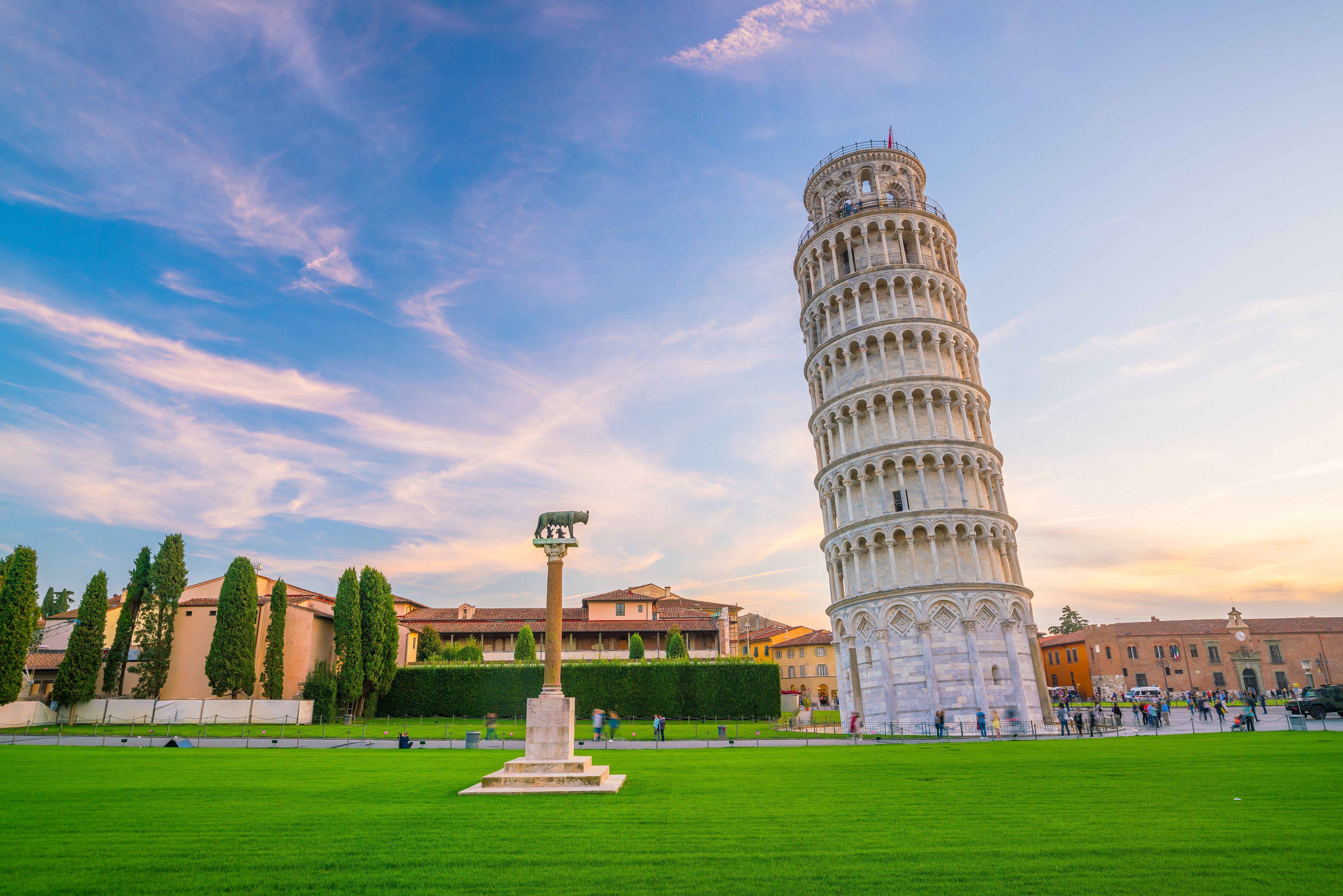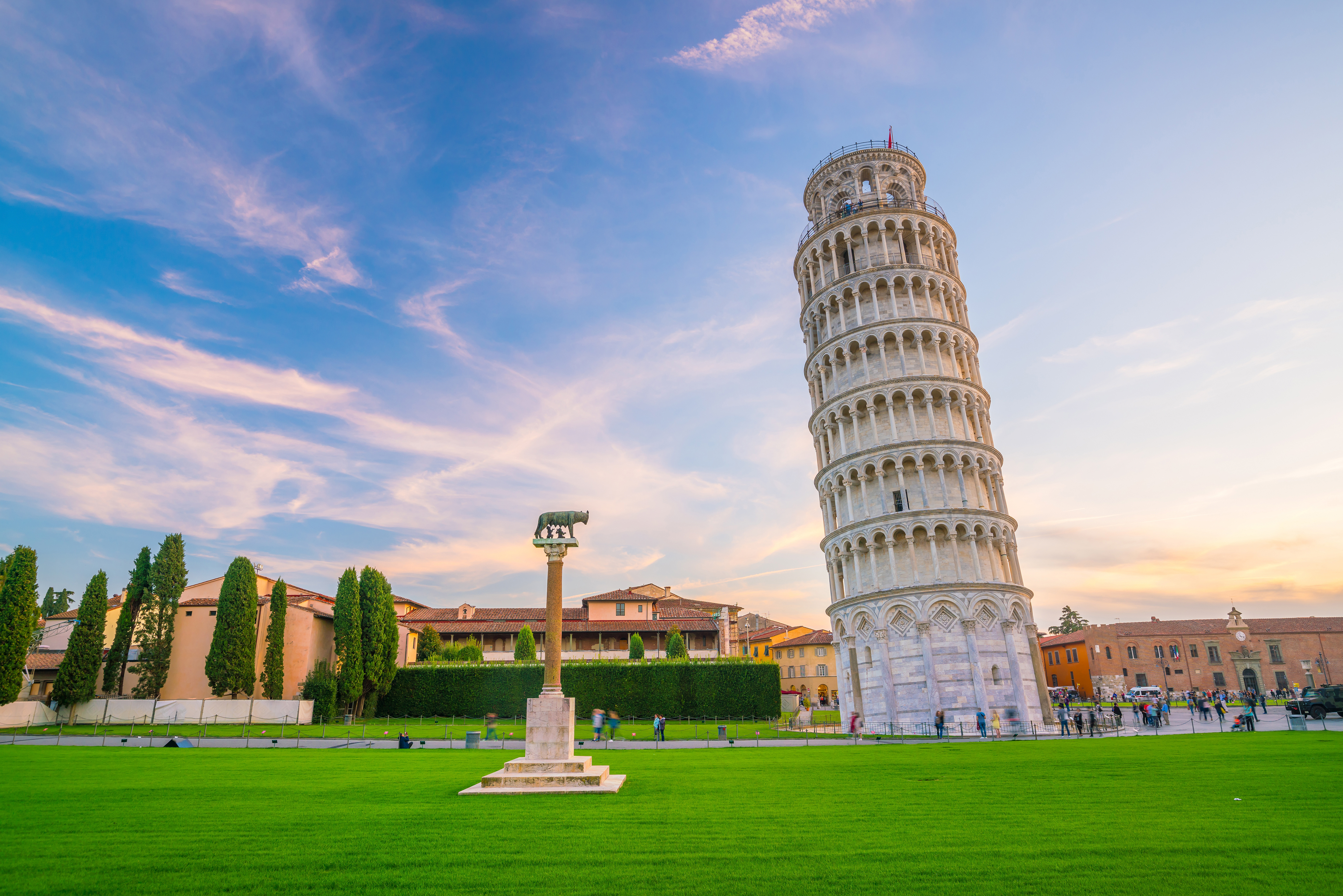The Leaning Tower of Pisa (Torre pendente di Pisa) is one of the most notable architectural works from medieval Europe, built in 1173. It is part of a construction project at Piazza del Miracoli, Pisa, Italy.
Recognized by UNESCO as a world heritage site, the Leaning Tower of Pisa was tilted from the beginning of its construction. After completion, the structure continued to lean but did not collapse. The tower is 55.86 m high from the ground to the low side roof and 56.70 m to the high side roof, has 294 steps, and the total weight of the tower is about 14,500 tons.
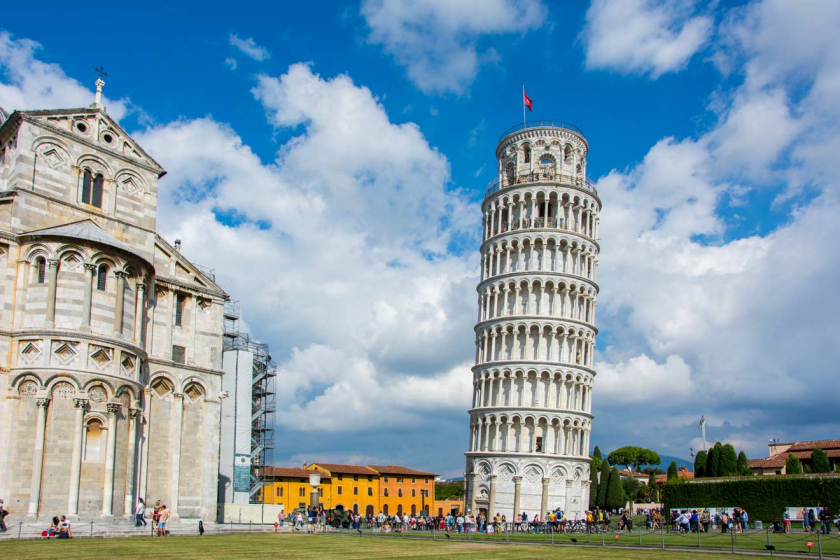
The Leaning Tower of Pisa has been leaning since it was built.
The reason why this structure leans is due to the geographical features of the city of Pisa itself. The soft ground with the main components of mud, sand and clay is said to be the main reason why the Tower of Pisa leans. Secondly, the foundation of the Tower of Pisa is made of a dense clay mixture and is about 3 meters deep. This foundation is not strong and deep enough to support the huge weight of about 14,000 tons of the entire tower.
Benito Mussolini, during his time in power in Italy, ordered engineers to repair the tower in 1934 by pouring concrete into its foundations to straighten the Leaning Tower of Pisa. However, this only made the tower lean more.
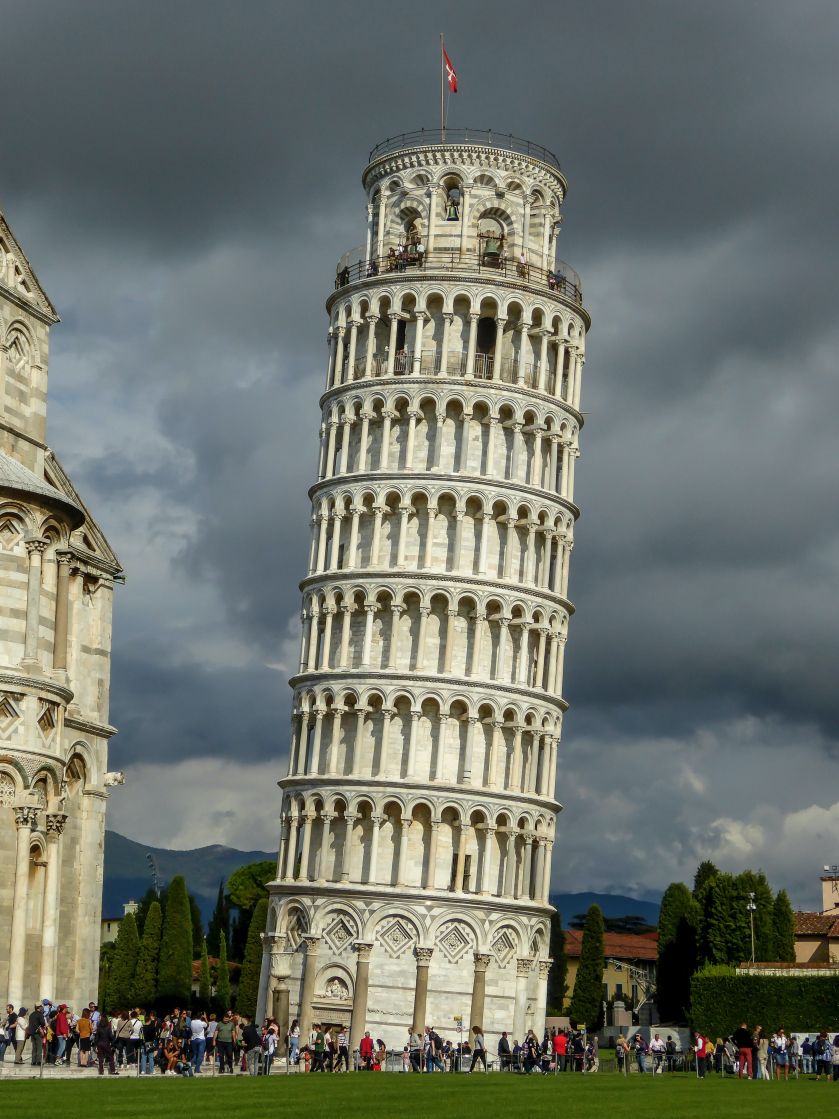
Leaning Tower of Pisa - Italy's iconic structure
Italy has a long history of devastating earthquakes. Because the center of the country lies right at the boundary where the Asian and European tectonic plates meet Africa, large earthquakes are common.
In addition, the tilt of the tower's foundation is also the reason why the structure is protected when the ground shakes. The tower is built of marble, which also plays an important role in helping the structure's vibration change.
The Italian government has carried out many rescue efforts in an effort to help the tower stand, from using liquid nitrogen, to removing soil from the base of the tower. Accordingly, experts proceeded to level the ground below the Tower of Pisa. Anchoring devices were also installed between 1990 and 2001. Thanks to this solution, the Tower of Pisa became more solid and stable when the tilt of the tower decreased to 3.97 degrees compared to 5.5 degrees in 1990 (initially the tilt was 0.2 degrees). However, experts could not make this structure stand upright and stop the tilt over time.
According to Professor George Mylonakis of Bristol University, the very soil that created the unstable tilt and caused the tower to collapse has helped the structure survive earthquakes for hundreds of years.
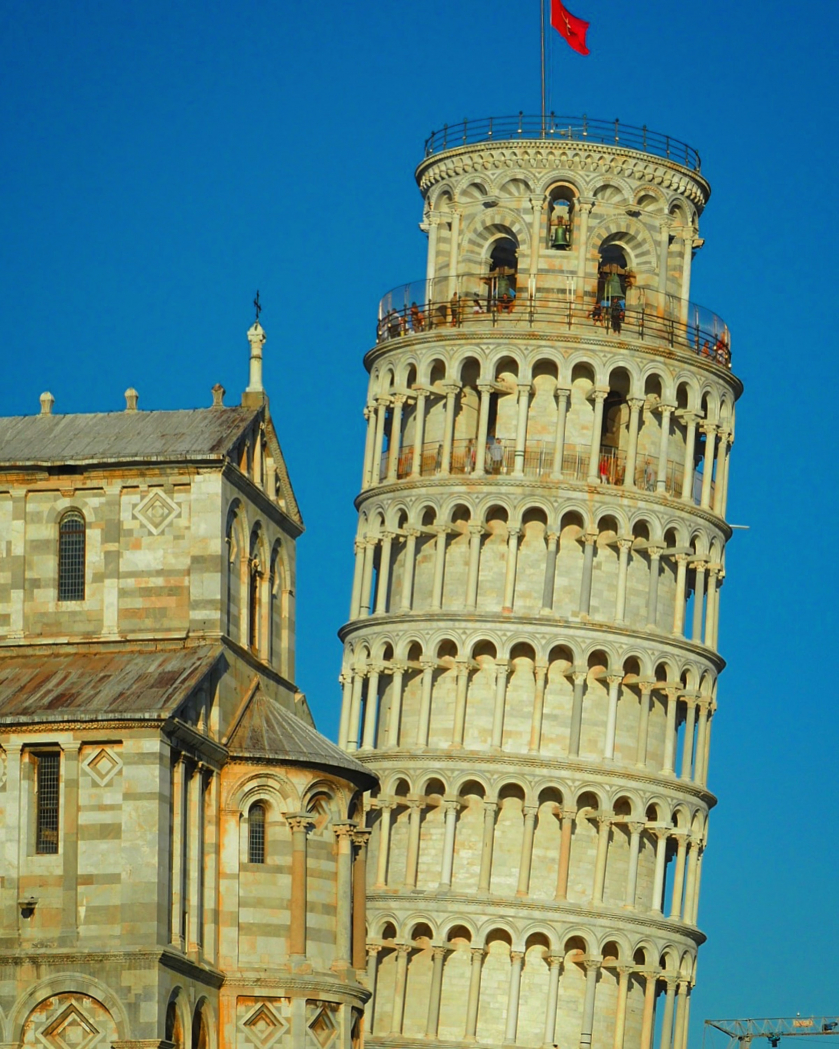
Many scientists affirm that the project will remain safe for many years to come thanks to its special structure.
In other words, the height and stiffness of the tower combined with the softness of the foundation soil create a protective structure during earthquakes. The tower is built with marble, which also plays an important role in the structure's ability to change its vibrations. Researchers say that this structure holds the world record for DSSI effect, so the Leaning Tower of Pisa will be safe for many years to come.
The Leaning Tower of Pisa is one of the famous tourist symbols of Italy, attracting hundreds of thousands of international visitors every year. According to the regulations of the organizing committee, each time visiting the tower, tourists must be divided into groups of 30 people, the visit lasts 30 minutes without a break. Before the visit, the tour guide gives warm-up exercises to prepare tourists to be able to climb 294 inclined steps continuously without getting dizzy. Children under 8 years old are not allowed to visit the tower, people under 18 years old must be accompanied by an adult.
The Leaning Tower of Pisa is a unique and attractive architectural design that attracts many tourists to explore. This tower has an involuntary tilt that defies time and historical events over the past 800 years.





